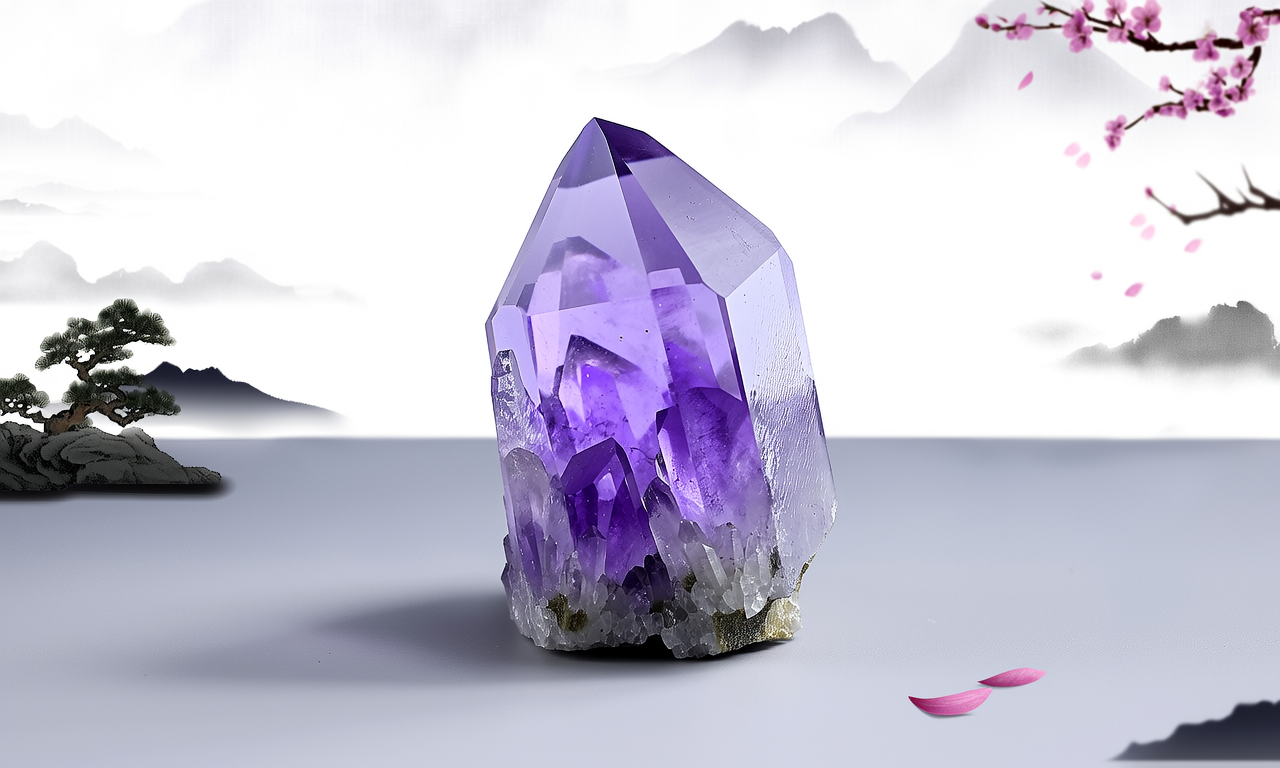No products in the cart.: $0.00
What Makes Amethyst So Valuable?
Thread Source: Amethyst Knowledge Popularization
You know, I’ve always been fascinated by why amethyst holds such a special place in the gem world—it’s not just a pretty purple stone; its value comes from a mix of rarity, beauty, and deep cultural roots that make it truly unique. Honestly, when I first handled a piece of Uruguayan amethyst, I was struck by how its rich, deep purple seemed to glow with an almost mystical quality, and it got me thinking: what really drives people to pay top dollar for this gem? Beyond the surface, factors like scarcity in key regions, the intense color variations that depend on iron content, and its role as February’s birthstone all pile up to create this allure. Plus, seeing pieces like those Amethyst Magic Box Strings sell for $99.99 or more in markets shows how demand isn’t slowing down—it’s kind of amazing how a mineral can capture so much human desire, don’t you think?

Rarity plays a huge role in amethyst’s value
Let’s face it, scarcity drives up prices for almost anything, and amethyst is no exception—especially when you look at sources like Uruguay, where the deep, burgundy-tinted gems are legendary but have become incredibly hard to find. I mean, reports suggest that output from Uruguayan mines has dropped by over 50% in the last decade due to exhausted deposits, turning high-quality stones into rare treasures that collectors snap up fast. For example, while Brazilian amethyst is more abundant and often lighter in color, making it more accessible at lower price points, the dwindling supply from Uruguay creates a premium; it’s not uncommon for top-grade pieces to fetch double or triple the cost of similar gems from other regions. This imbalance isn’t just about geology—it’s economics in action, where limited availability meets high demand, pushing values sky-high for the best specimens.
Color and clarity are absolute game-changers
When it comes to amethyst, the depth and purity of that purple hue are everything—seriously, a vivid, even color can make or break its worth, and it’s all down to those iron impurities that give it life. Gems with a consistent, saturated purple, like the ones from Zambia that lean toward purplish-red, are prized because they’re less common; in fact, industry standards rate amethyst on a scale where deep, uniform shades command up to 30% higher prices than paler or zoned varieties. But here’s the kicker: clarity matters just as much. Stones with high transparency and minimal inclusions, say, no visible flaws under magnification, are graded as premium and can sell for over $100 per carat in auctions, while cloudy or fractured ones might go for a fraction. And don’t forget, heating sensitivity—if you expose amethyst to temps above 240°C, it can fade or yellow, ruining the value overnight. So, yeah, that stunning color isn’t just beautiful; it’s fragile gold.
Cultural and symbolic weight adds immense appeal
It’s wild how much meaning we humans attach to rocks, and amethyst’s symbolism across cultures seriously boosts its desirability—in the West, it’s tied to wisdom and peace as February’s birthstone, which alone drives seasonal spikes in jewelry sales. I remember chatting with a jeweler who said that during Valentine’s season, amethyst pieces fly off shelves because of their love connotations, sometimes doubling in price for limited editions. Over in Eastern traditions, it’s seen as a luck-bringer for attracting “noble people” and harmonizing Feng Shui energies, which fuels demand in markets like China and Japan; there, amethyst ornaments aren’t just decor but investments in well-being. This emotional pull translates to real dollars—take those Amethyst White Ghost bracelets priced at $109.99; they’re not just accessories but talismans, and that perceived spiritual value can inflate costs by 20-40% compared to similar non-symbolic gems. Honestly, it’s a reminder that value isn’t always about what you see, but what you believe.
Practical uses and market demand keep the momentum going
Beyond all the mystique, amethyst’s durability and versatility in jewelry make it a practical choice that sustains its worth—with a Mohs hardness of 7, it resists scratches better than many gems, so pieces like necklaces or bracelets last for years without losing their sparkle. That reliability, combined with its affordability relative to diamonds or rubies, makes it a go-to for everyday wear; for instance, items like the Purple Polypore crystal strings at $139.99 sell well because they offer luxury without breaking the bank. Demand also surges from trends, like the rise in holistic wellness, where amethyst is promoted for its “calming properties,” driving online searches up by 25% annually. But here’s the real clincher: as global incomes rise, especially in emerging markets, more people can afford these gems, creating a steady price floor. So, while it might not be as rare as sapphire, amethyst’s blend of beauty, function, and cultural cachet ensures it stays valuable—truly, a gem for the ages.



 Please wait…
Please wait…